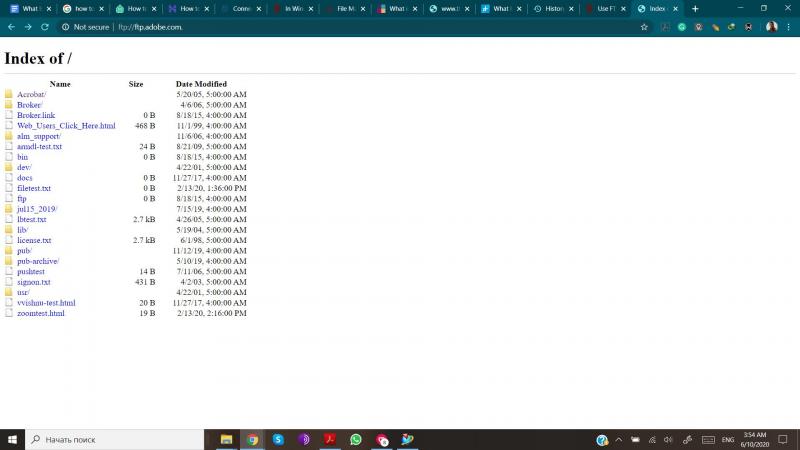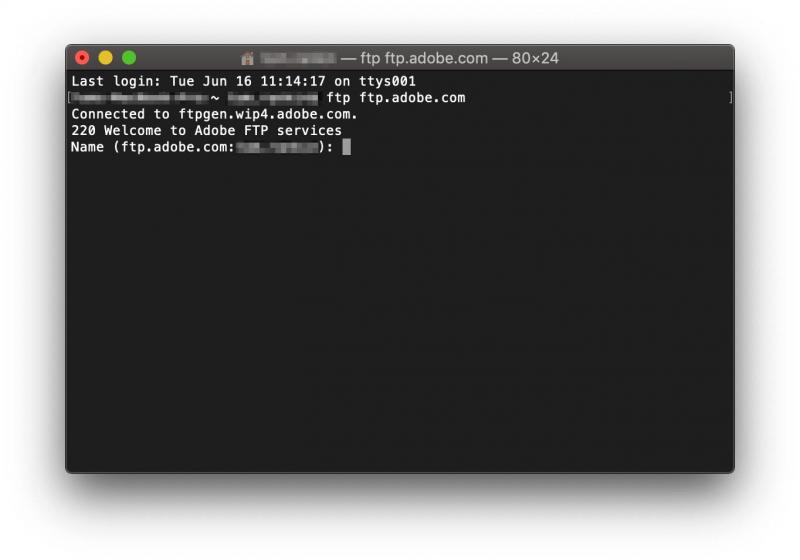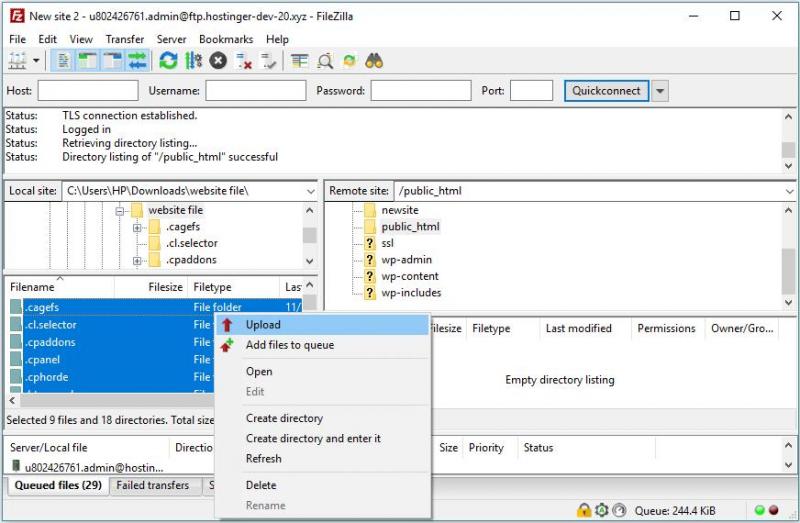- Aug 04, 2020
 0
0- by A2 Support Team
The basic idea behind the internet is the transfer of files from one computer to another – irrespective of their location. There are quite a number of ‘transfer protocols’ available today — HTTP being the most common of them all. File Transfer Protocol (FTP) is also very popular.
FTP is one of the oldest protocols used to transfer files on a network, between local or global servers. FTP lets you transfer any kind of file without file extension restrictions.
In this post, we’ll answer what is FTP, and walk you through the process of using it. Let’s get started!
What Is File Transfer Protocol (FTP?)
In very simple terms, File Transfer Protocol (FTP) is a way to let you move files over the internet. It’s one of the oldest network protocols still in use today, and if you’ve ever downloaded something from the internet, you’ve likely used FTP before.
However, FTP can also be used to download and upload web pages. The protocol is based on the Transmission Control Protocol and Internet Protocol (TCP/IP). In essence, each time you try to transfer files on the internet, TCP/IP is simply sending those files from a personal computer to an online server and vice-versa.
However, one of the major challenges of using FTP is security. When FTP was first developed, malicious activity was rare. Today, the rise of cybersecurity threats has paved the way for much needed secure and encrypted protocols. So, if you don’t want to expose your computer to threats, we recommend either File Transfer Protocol Secure (FTPS) or Secure Shell File Transfer Protocol (sFTP).
Unlike the unencrypted FTP, data sent through FTPS and sFTP cannot be intercepted and read, which ensures that your information is safe. Both use different authentication options to protect your files, and if you’re wondering which is best for you, sFTP is a solid choice.
The major advantage sFTP has over FTPS is the use of a single ‘port number’ for all its connections. In contrast, FTPS requires that a new port number be created each time a transfer request is made. This exposes your information to a significantly higher level of risk.
When Can You Use FTP?
FTP definitely has its problems but this doesn’t mean it’s without value today. In order to decide whether using FTP is right for your task, you’ll need to first answer some questions, such as:
- What type of data are you moving?
- How much data do you intend to transfer?
- What is your internet speed?
The nature and size of the data you intend to transfer may be the most important factor to consider. If you have multiple files within a folder, FTP may not be the best choice. For example, HTTP transfers multiple smaller files faster. However, if you want to send large file sizes without getting interrupted in the process, FTP will be more ideal.
Many FTP clients also grant you a lot of control over how your files can be accessed. Among other permissions, you can choose who can edit, delete, and download your files as administrators. Also, with the availability of sFTP and FTPS, security is less of a problem.
As a real-world example, take building a WordPress or Joomla! site. If you choose to upload these files in bulk (exceeding the file size limitations), the platforms will throw an error. This is where FTP comes in handy. It will also be ideal in situations where you have to back up or migrate your site to an entirely new server.
How Can You Transfer Files Using FTP? (3 Top Options)
Transferring files using FTP is a pretty simple process, with three ways to go about it. Let’s take a look at them!
1. Connecting to Sites Within Your Web Browser
It’s now uncommon, but one of the simplest ways of using FTP is through a web browser. There are certain sites that grant you access files publicly through FTP. These companies offer forms, software updates, patches, and so on using the protocol. Each company decides exactly how they want their files to be accessed — either anonymously or with authentication.
With anonymous FTP logins, simply prefix ftp://ftp. to the company’s website address. For example, ftp://ftp.adobe.com/:

This method only lets you download files with public access. In other words, you cannot use this to upload files to a web site.
Other FTP sites will require the user to enter some authentication credentials. In this case, you’ll need to enter the site address in the same format described above:

As FTP sites are less in vogue today, they may not as well maintained as other methods. As such, you’ll want to bear this in mind in order not to expose your computer to serious security threats.
2. Using Command-Line FTP
This is another seldomly used FTP method, although Windows, macOS, and Linux systems all offer a command line FTP client, although accessing them is slightly different depending on your Operating System (OS.) With the default command prompt open, you can work with dedicated FTP sites directly from your chosen shell:

Some of the most common FTP commands include open and get which let you create a new connection and copy files from a remote computer.
While the command line may suit some developers, it’s generally an outdated way of accessing files. It may also require certain firewall and antivirus modifications to get working.
3. Using Graphical FTP Clients
This is by far the most convenient and reliable way to go about transferring files through FTP. An FTP client simply serves as a bridge between your local computer system and an internet server, letting you easily work with the files on both systems. Unlike the other methods, FTP clients are fast, secure, reliable, and generally have no file size limitation.
One of the best FTP clients available is the open-source, zero-cost, cross-platform FileZilla. Once you’ve downloaded it, you can easily upload files, folders, and even directories from both local and remote servers.

We previously carried out a roundup of free FTP clients that’s well worth a look. If your FTP skills could do with a tune up, the WordPress support website has a great primer on using FileZilla that we encourage you to check out.
What Is FTP Conclusion
In spite of its problems and the availability of newer solutions, FTP still remains a very viable option for file transfer over a network. It still remains one of the fundamental elements running in the background of many sites on the internet.
Whether or not you should be using FTP depends solely on the nature of your organization and the files you intend to transfer. If you ever choose to transfer files using FTP, a graphical client may be the simple option to choose. It’s a great blend of power, flexibility, and ease of use that saves you time and significantly simplifies the procedure for you.
Featured Image Credit: iStock.












